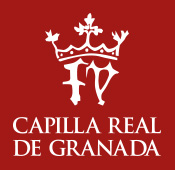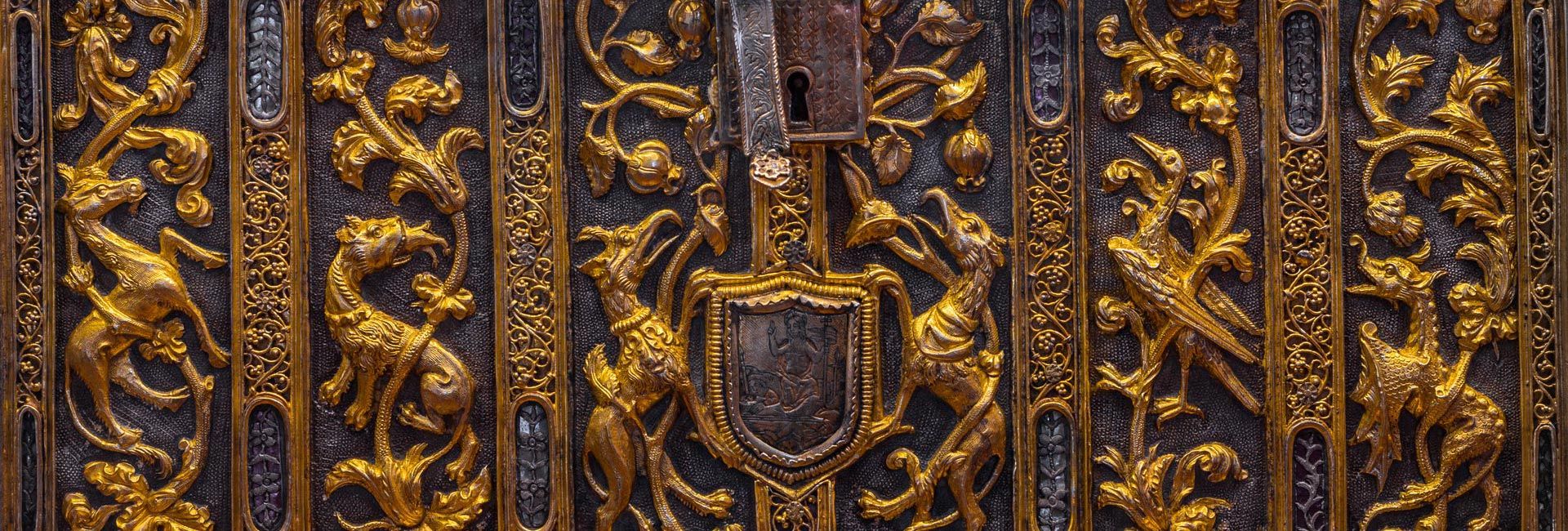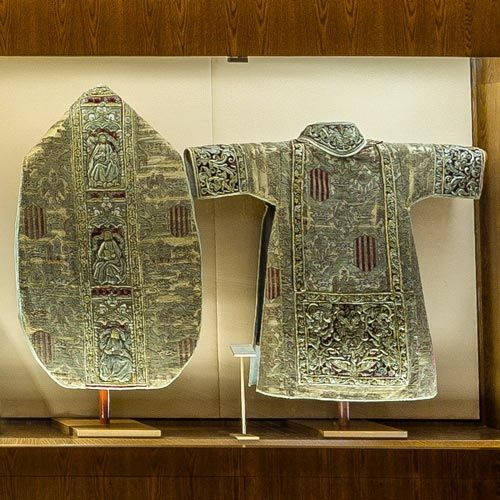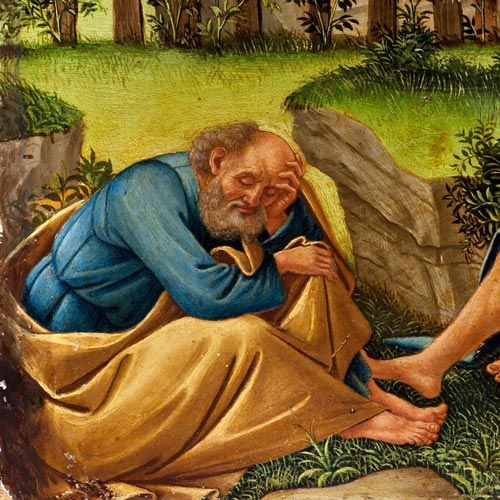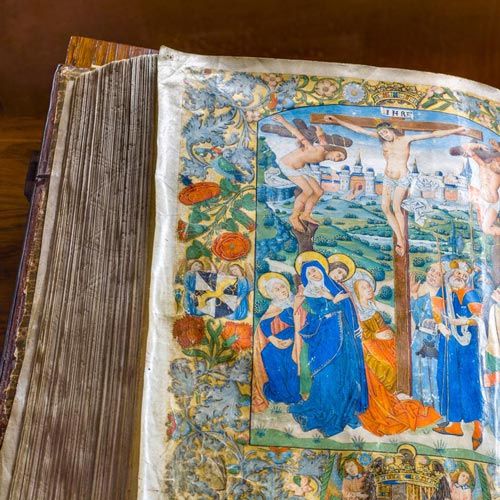Throughout the visit to the Sacristy-Museum we can enjoy all the exhibits, but the visitor is especially attracted by the personal jewels and ornaments of the King and Queen: the crown and the sceptre, the jewellery box, the Queen’s mirror and the sword of the King.
The Queen’s jewel case stands out due to its beauty, interest and value. This silver overlaid-in-gold work of art, worked in relief and engraved, is divided with bands into six areas with beautiful themes of flora and fauna which are in harmony with the Resurrection in relief: Christ blesses with his right hand and in his left hand he holds a victory banner. Even if tradition has linked this case to the jewels the Queen sold to help Columbus in his discovery voyage, the religious motif in relief speaks more of a reliquary.
Two other objects from the Queen’s personal use are her royal emblems: the crown and the sceptre, both in silver overlaid in gold and in a Gothic style.
Queen Isabella’s crown (14 cm. in diameter) stands out for its great simplicity. It has a smooth lower ring and the upper part has openwork with entwined stems, pomegranates and leaves.
Queen Isabella’s sceptre (1 meter long) has an upper rhomboid-shaped end with a central cylinder and ornaments made of superimposed leaves.
One of the most surprising jewels is the mirror of the Catholic Queen (72 cm. high).
It is in the Renaissance style but was later turned into a monstrance.
King Ferdinand’s sword is the only piece of the King’s personal use that is preserved here. It is one of the best works of its time, from an Italian workshop, maybe Florentine. (92 cm. long and 4 cm. wide). Its pommel is spherical with leaves and an upper central flower. The hilt with an engraved layer of gold is completed with medallions that form the hilt with two truncated cones joined on their wider part, and from there sprout two legs in a semicircle shape with snake heads.
The Queen’s Reliquary, assigned to keep the Lignum Crucis, is one of the most beautiful and interesting jewels; its designer joins decorative language with deep symbolic, artistic and religious concepts. This gilded piece of art (37 cm. high) has the Gothic (flamígero) style of the end of the XV century or the beginning of the XVI century.
All the sculptural themes of the Queen’s Reliquary are closely linked; the designer managed to represent Christ’s genealogical tree with its culminating point in the Calvary scene, this judgement being reaffirmed as the cross itself forms the upper part of the tree. This reliquary is preserved in the altarpiece-reliquary on the side of the epistle. Other gold works show different styles: Gothic, Renaissance, Mannerist, Baroque, and Rococo.
We find chalices, holders, crosses, monstrances and, above all, reliquaries in the Sacristy-Museum, in the altarpiece-reliquaries of the transept and in the glass case placed at the entrance to the Cathedral.
